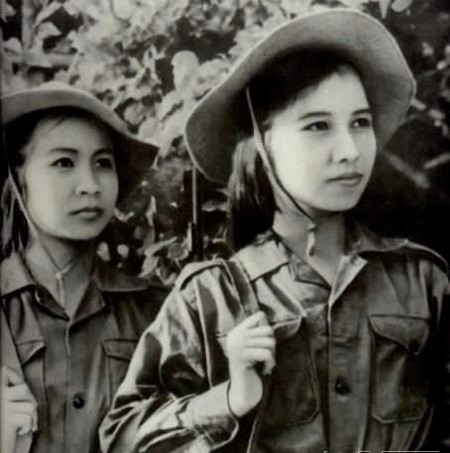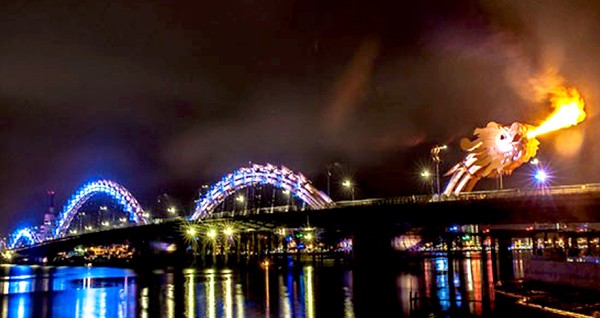Hello and welcome to VOV’s Letter Box, our weekly feature dedicated to listeners throughout the world. I’m Mai Phuong.
And I’m Ngoc Huyen. It’s great to be back again on VOV’s Letter Box.
A: First on our show today, we’d like to say hello to Mr. John Burczyck of the USA. Mr. Burczyck listened to our program on September 27 and reported that reception has been difficult to hear during the past three days. He said he feels lost without VOV because listening to VOV has been his nightly routine.
B: Thank you, Mr. Burczyck, for your comments. We will forward your technical report to our technicians to help them improve our transmission quality. Mr. Burczyck also sent us an article about the Greenport and a picture of Russian cosmonaut Valentina Tershkova. He said she is someone he admires and he wants to become an astronaut, too.
A: Mr. Hannu Kiiski of Finland reported listening to our broadcasts on September 18 on the frequency of 5930 khz with SINPO rated at 44333.
B: Thank you, Mr. Kiiski, for tuning in to our programs. We’ll send you our program schedule and frequency list. We hope you’ll keep listening to us.
A: Mitul Kansai of Pakistan has, during the past few days, listened to us regularly. He has sent us a number of letters and emails and posed a number of questions. One question is about the status of women in Vietnam.
B: Vietnamese women have always played an important role in Vietnam's history. When we talk about heroic Vietnamese women, we often think of the Trung sisters, Trung Trac and Trung Nhi, who in the 1st century led a rebellion to get rid of To Dinh, the corrupt Chinese governor occupying Vietnam. The Trung sisters are often praised for their military skills and courage and their image is often used to illustrate women’s role in Vietnamese society.
 |
A: Women played a significant role in all of Vietnam’s wars. They served as patriots guards, intelligence agents, propagandists, and military recruiters. They were active participants in every struggle to liberate their country from foreign occupation, from the Chinese to the French colonialists. This participation is also epitomized in the old Vietnamese adage: "When the enemy is at the gate, the woman goes out to fight".
B: When the war ended, Vietnamese women participated in all activities in society. They took on leadership roles in politics. In the family, Confucianism's emphasis on the family still impacts Vietnamese women’s lives, especially in rural areas, where it encourages premarital female virginity and condemns abortion and divorce. Vietnamese society, though, tends to follow the male ancestral line, pushing women to the periphery. Vietnam has a one-or-two child policy.
A: Vietnam has made a real effort to improve gender equality. Gender equality has been included in socio-economic development programs and female participation in Vietnam’s National Assembly, People’s Councils and state agencies is comparatively high.
B: As a member of the UN Human Rights Council until 2016, Vietnam is honoring international commitments to foster and protect the rights of women and girls to abolish all forms of discrimination and violence against women.
A: Gender equality is a fundamental human right and an important measure of social progress. In recent years, Vietnam has made significant progress in implementing the Universal Declaration of Human Rights, UN conventions on human rights, the Beijing platform on gender equality, and the Millennium Developments Goals.
A: In Vietnam, we have several holidays honoring women and their enormous contributions to society. We observe October 20 as Vietnamese Women’s Day and March 8th International Women’s Day. On these occasions, Vietnamese women receive flowers and gifts from their loved ones.
B: The image of Vietnamese women with their long black hair and beautiful silk dresses flowing in the breeze, gracefully riding bicycles has been featured in literature, poems, paintings and postcards.
A: That’s a brief on the status of Vietnamese women. Next is a letter from SB Sharma of India, a regular listener. Sharma wrote: “All your programs give me information about Asia and the world. The news is current and unbiased, vivid and direct from the sources. The programs bring in every aspect of your country and are presented nicely for our benefit. Your programs are very popular among your listeners”.
B: Thank you, Sharma for regularly tuning in to our broadcasts. Sharma inquired about the biggest bridge in Vietnam?
A: Vietnam is a country of rivers, lakes and of course, bridges, which have played a vital part in the nation’s history. Vietnam’s bridges range from foot bridges and bamboo bridges in rural areas to modern highway and rail bridges. Vietnam recently built a new bridge in Da Nang city in the shape of a giant dragon that breathes huge balls of fire. The bridge was designed by an American firm, the Louis Berger Group. The main span of the 37.5m-wide bridge is bookended by two 128m side sections, with a dragon’s head and tail resting on those. The whole construction extends 666m in length.

Dragon bridge in Da Nang city |
A: Southeast Asia’s longest cable-stayed bridge is the Cần Thơ Bridge over the Hau river, the largest branch of the Mekong river in Can Tho city. The bridge is 2.75 kilometers long. It has a 6-lane roadway measuring 23 meters in width, with 4 lanes for motorized traffic and two pedestrian and bike lanes. It has a clearance of 39 meters, which allows large ships to pass underneath it. The bridge was inaugurated in 2010.
B: The Thi Nai bridge in the central province of Binh Dinh is the longest bridge crossing the sea in Vietnam. The bridge links Quy Nhon city and Phuong Mai peninsula where the Nhon Hoi Economic Zone is located. That bridge is nearly 7 km long.
A: That’s a few facts about bridges in Vietnam. On today’s program, we’d like to acknowledge letters and emails from Dewan Rafiqul Islam of Bangladesh, Ratan Kumar Paul and Demakamal Hazarika of India , Andrej Kuznecovs of Latvia, Morizumi Taguchi, Masaru Sekimoto and Fumito Hokamura of Japan, and Eddi Setiawan of Indonesia. We’ll send you QSL cards and the souvenirs you requested as soon as we can.
A: We welcome your feedback at: English section, Overseas Service, Radio Voice of Vietnam, 45 Ba Trieu Street, Hanoi, Vietnam. Or you can email us at: englishsection@vov.org.vn. You’re invited to visit us online at www.vovworld.vn, where you can hear both live and recorded programs. Good bye until next time.